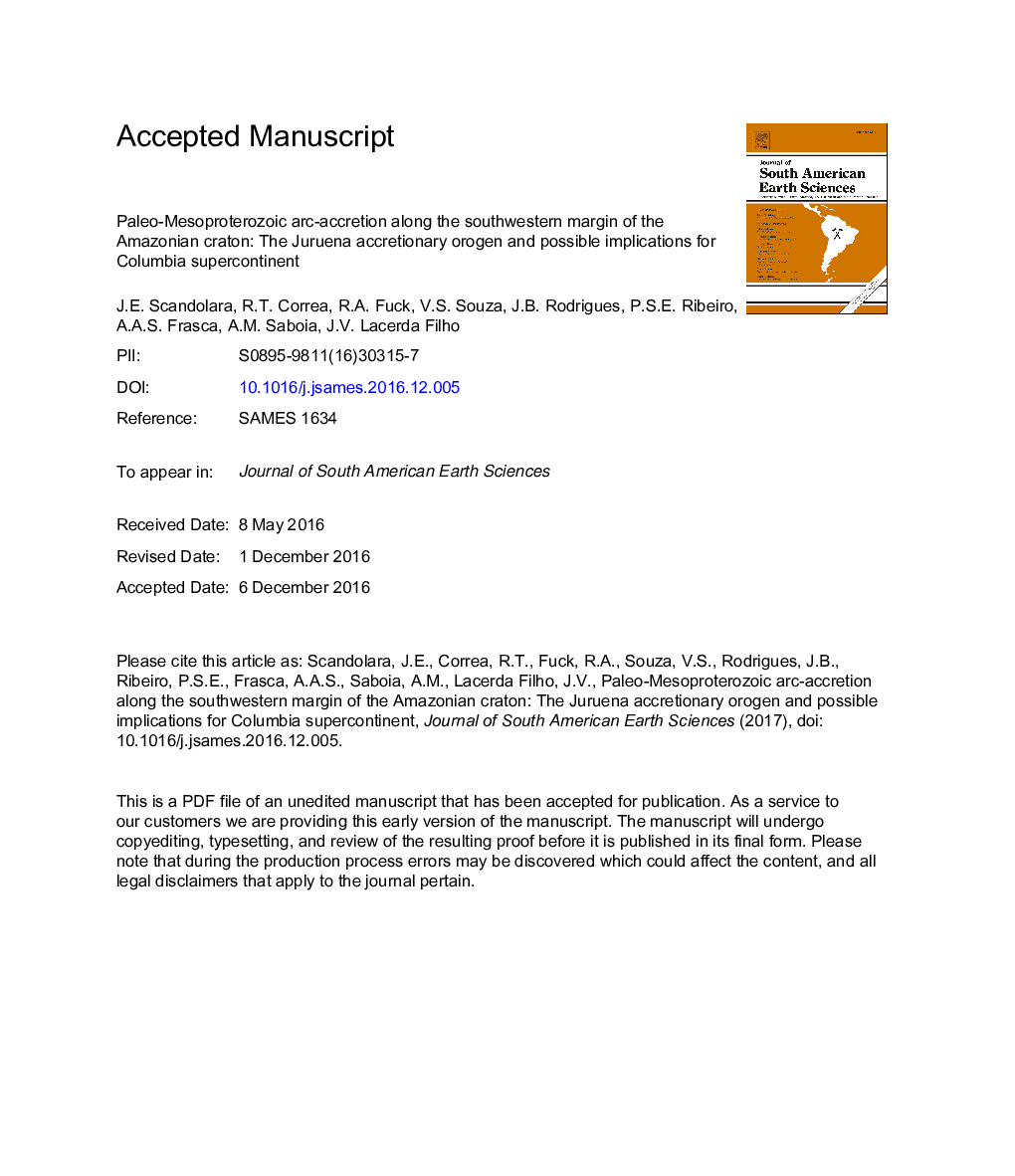| Article ID | Journal | Published Year | Pages | File Type |
|---|---|---|---|---|
| 5780521 | Journal of South American Earth Sciences | 2017 | 74 Pages |
Abstract
The Juruena accretionary orogen has been the site of repeated reactivation with renewed basin formation, magmatism and orogeny during the Mesoproterozoic and the early Neoproterozoic. U-Pb and whole-rock Sm-Nd ages, Ar-Ar and Rb-Sr mineral ages suggest that the older high grade tectonometamorphic events in the Juruena accretionary orogen took place between 1.69 and 1.63 Ga, defining the metamorphic peak of the Rio Negro-Juruena orogeny and the original structural architecture of the orogen. The main structures of the Rio Negro-Juruena orogeny were almost completely obliterated between 1.42 and 1.37 Ga, due to the superimposed Rondonian-San Ignácio orogeny. Later on, between 1.20 and 1.12 Ga, these structures were affected by a ductile event represented by the large Ji-Paraná transpressive shear system and by the Tarilândia transcurrent shear zone developed under low-T amphibolite facies conditions, both related to the Sunsás orogeny. The evolution of Jamari and Juruena terranes as a Paleoproterozoic/Mesoproterozoic orogen developed between 1.81 and 1.51 Ga and their thorough reworking in Mesoproterozoic times is instrumental to establishing the position of the Amazonian craton in the proposed Paleo-Mesoproterozoic Columbia (Nuna) supercontinent, as well as in the Rodinia reconstruction at the end of the Mesoproterozoic.
Related Topics
Physical Sciences and Engineering
Earth and Planetary Sciences
Earth and Planetary Sciences (General)
Authors
J.E. Scandolara, R.T. Correa, R.A. Fuck, V.S. Souza, J.B. Rodrigues, P.S.E. Ribeiro, A.A.S. Frasca, A.M. Saboia, J.V. Lacerda Filho,
